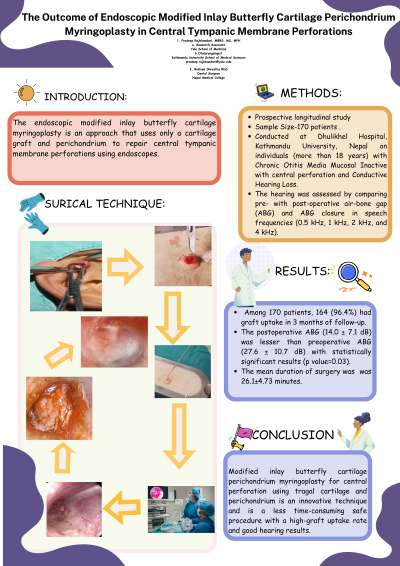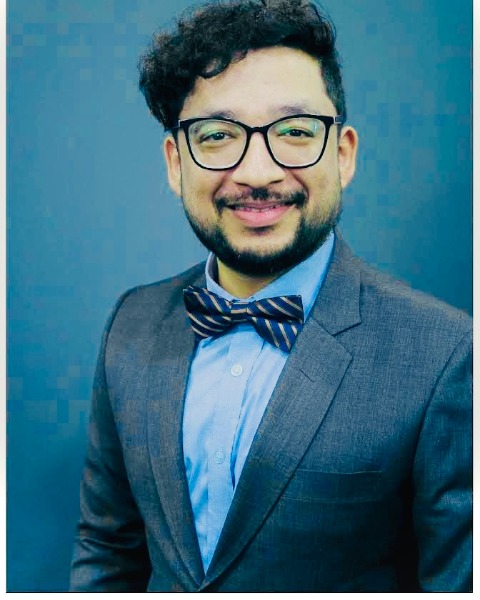Otology/Neurotology
(0965) The Outcome of Endoscopic Modified Inlay Butterfly Cartilage Perichondrium Myringoplasty in Central Tympanic Membrane Perforations
Monday, September 30, 2024
12:00 PM - 1:00 PM EDT

Has Audio
Disclosure(s):
Pradeep Rajbhandari, MBBS,MS, MPH: No relevant relationships to disclose.
Introduction: The modified inlay butterfly cartilage myringoplasty is an approach that uses only a cartilage graft and perichondrium to repair tympanic membrane perforations, and endoscopes have better optics and magnification with a wide angle of view and provide excellent resolution of the image. The main advantage of cartilage is that it has a very low metabolic rate, provides support to prevent retraction, and reacts minimally to an inflammatory reaction. This study aims to find graft uptake success rates and hearing outcomes using this technique.
Methods:
Methods: This was a prospective longitudinal study performed among 170 patients who underwent modified inlay butterfly cartilage perichondrium myringoplasty for central perforation using tragal cartilage and perichondrium. This study was conducted at Dhulikhel Hospital, Kathmandu University, Nepal from 1st December 2016- 30th December 2019 on individuals (more than 18 years) with Chronic Otitis Media Mucosal Inactive with central perforation and Conductive Hearing Loss. The hearing was assessed by comparing pre- with post-operative air-bone gap (ABG) and ABG closure in speech frequencies (0.5 kHz, 1 kHz, 2 kHz, and 4 kHz).
Results:
Results: Among 170 patients, 164 (96.4%) had graft uptake in 9 months of follow-up. The postoperative ABG (14.0 ± 7.1 dB) was lesser than preoperative ABG (27.6 ± 10.7 dB) with statistically significant results (p value=0.03). The duration of surgery was between 18-37 minutes, and the mean duration for surgery was 26.1±4.73 minutes.
Conclusions:
Conclusions: Modified inlay butterfly cartilage perichondrium myringoplasty for central perforation using tragal cartilage and perichondrium is an innovative technique and is a less time-consuming safe procedure with a high-graft uptake rate and good hearing results. The major limitation of our study is the small sample size and the short duration of the study. Long-term follow-up results are awaited.

Pradeep Rajbhandari, MBBS,MS, MPH
Research Associate
Yale School of Medicine
Woodside, New York, United States- RS
Roshani Shrestha, Other
Nepal Medical College, New York, United States
